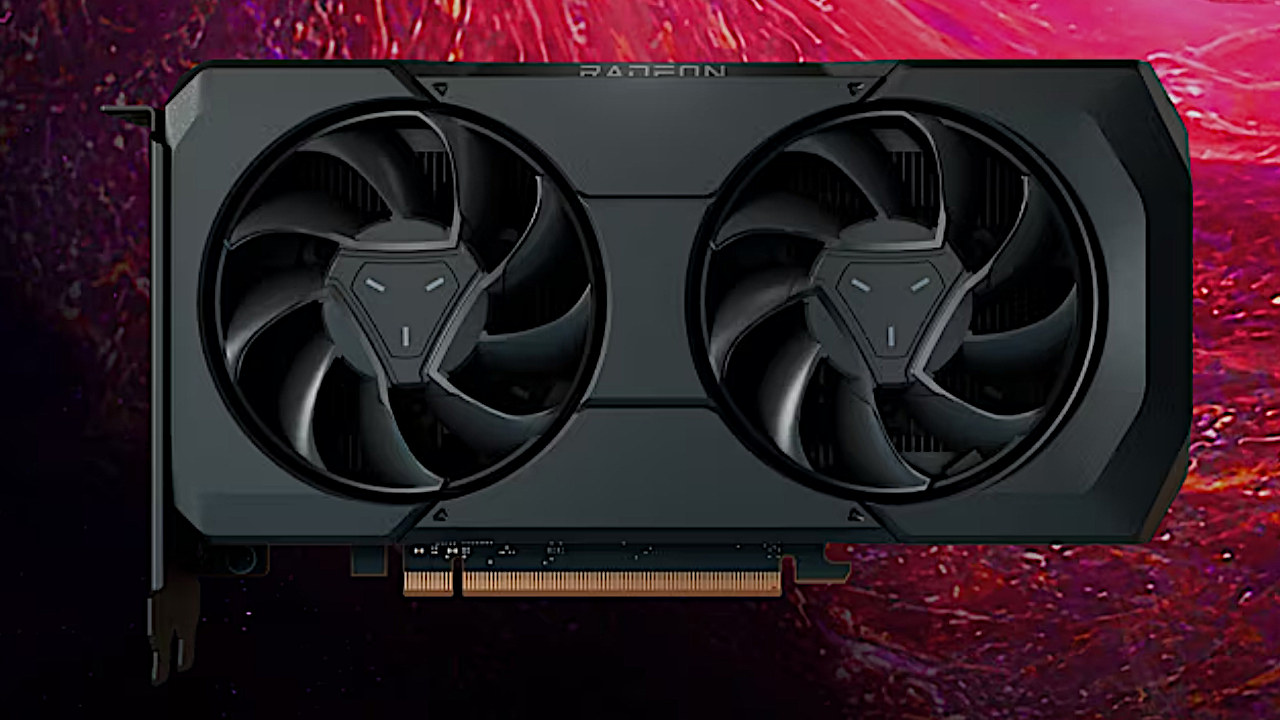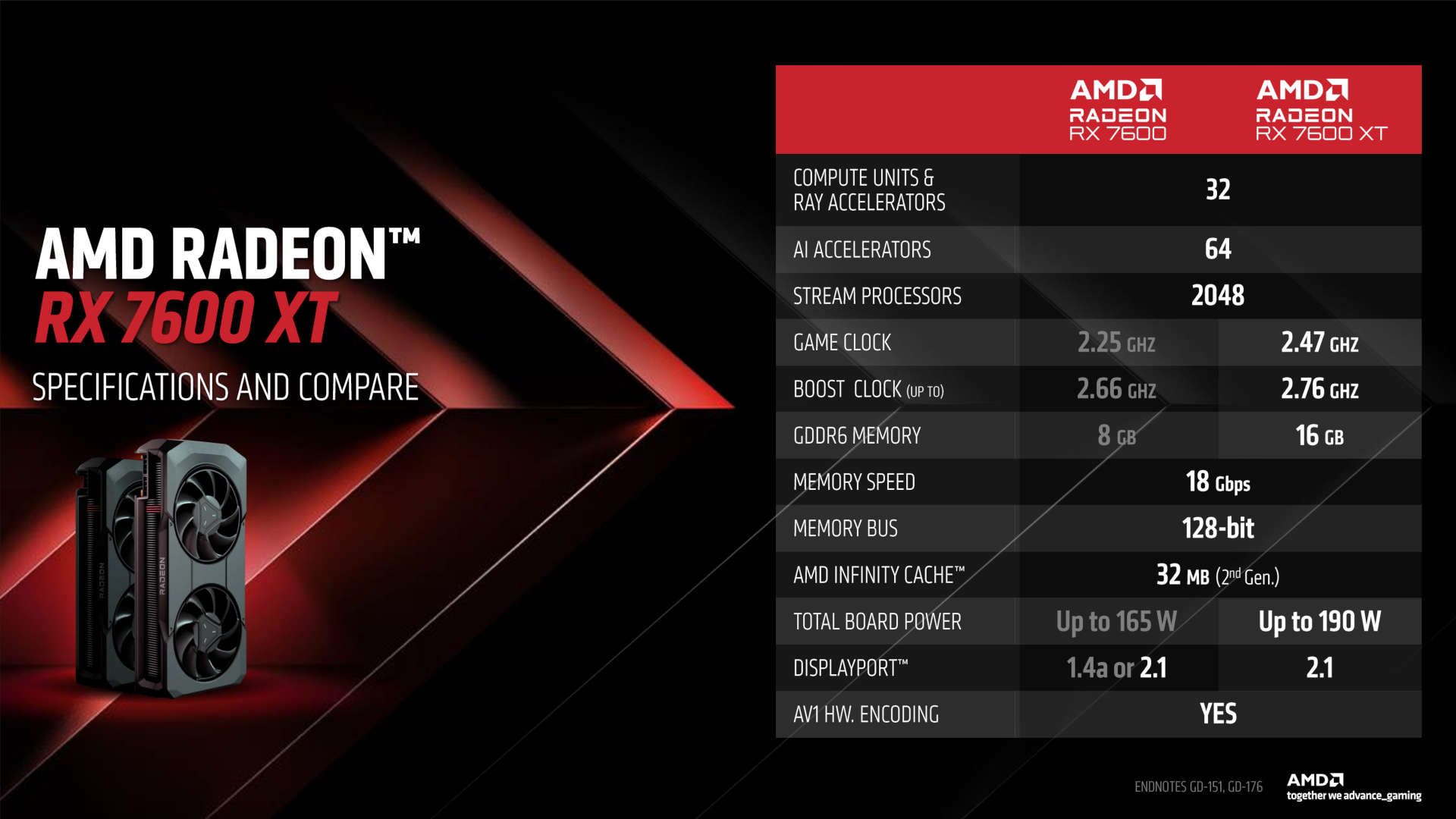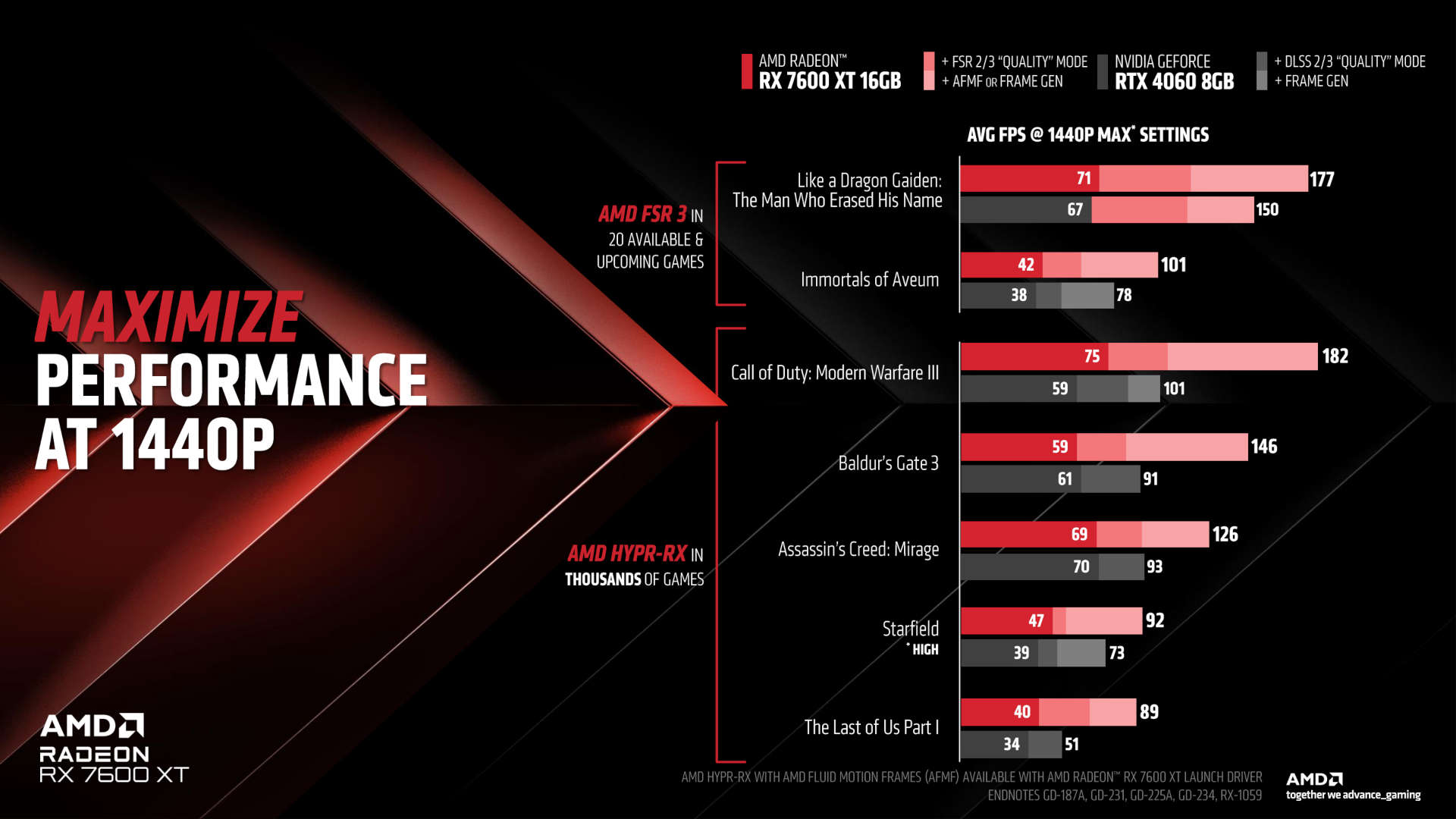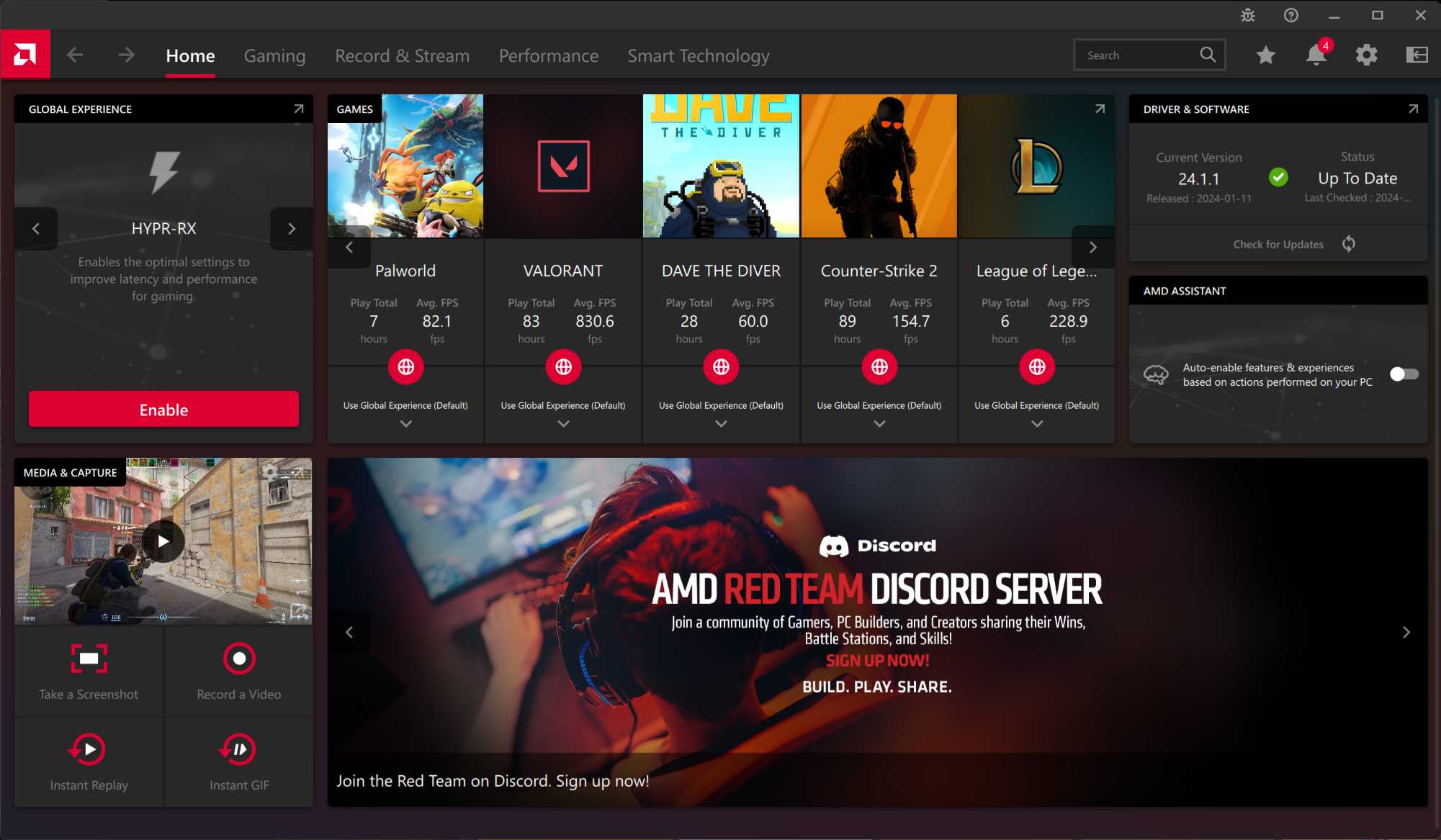
What you need to know
- A new PC gaming desktop graphics card from AMD, the Radeon RX 7600 XT becomes available for purchase today, January 24, 2024.
- Carrying a $329 MSRP, the GPU has 16GB of VRAM and supports new AMD HYPR-PX technology like Fluid Motion Frames (AFMF.)
- AFMF helps to increase framerates on supported Radeon 6000/7000 Series desktop and 700M Series mobile iGPUs for smooth gameplay.
It's finally the launch day for AMD's latest offering, its Radeon RX 7000 series of desktop graphics cards with the new RX 7600 XT. It's a more powerful variant of the entry-level, standard Radeon RX 7600, though it's still targeting PC gamers building mid-range desktops to play at 1080p and 1440p resolutions. Although it's a relatively low-power GPU, pulling 190W to pair with an affordable PC power supply of around 600W, it supports modern AV1 encoding and some extra luxuries.
The Radeon RX 7600 XT sports 16GB of VRAM, which is somewhat more generous than its competitors when considering the $329 MSRP attached. For example, an NVIDIA GeForce RTX 4060 retailed for the same price at launch but offered only half the VRAM at 8GB. Conveniently, NVIDIA also releases its GeForce RTX 4070 Ti Super with 16GB of VRAM today, but for a much higher $799 MSRP. Both cards shouldn't be directly compared; instead, the focus is on the Radeon RX 7600 XT and its support of AMD's latest PC gaming revolution: HYPR-RX and AMD Fluid Motion Frames, or AFMF for short.
Where to buy the Radeon RX 7600 XT
- Amazon: Check latest listings
- B&H: Gigabyte Radeon RX 7600 XT Gaming OC ($329.99)
- Best Buy: Check latest listings
-
Newegg: XFX Speedster QICK309 Radeon RX 7600 XT ($349.99)
- XFX Speedster SWFT210 Radeon RX 7600 XT ($329.99)
- ASRock Steel Legend Radeon RX 7600 XT ($349.99)
- ASRock Challenger Radeon RX 7600 XT ($329.99)
AMD Radeon RX 7600 XT specifications


The Radeon RX 7600 XT is still built using the same Navi 33 tech and RDNA 3 architecture as its predecessor, the standard RX 7600. AMD lists specs for the new card with direct comparisons to the non-XT variant, showing the relatively modest bump beside the doubled VRAM. The power draw is now slightly higher than the non-XT card, moving from 165W to 190W, but so much is practically unavoidable when the base and boost clock speeds are increased.
In direct comparisons with its NVIDIA competitor, AMD pits the RX 7600 XT against the GeForce RTX 4060 for in-house benchmark testing. It edges ahead or at least matches the average FPS in modern titles like Baldur's Gate 3, Call of Duty: Modern Warfare III, and Starfield, though the graphs are undoubtedly framing the implied benefits of using AMD's new frame generation technology, AFMF, versus NVIDIA's DLSS frame gen solution supporting games like Alan Wake 2.
Real-world testing would likely show the RTX 4060 performing better in other games, but anything close to 60 FPS at a 1440p resolution with max graphical settings is impressive, if true.
What is AMD Fluid Motion Frames? (AFMF)

Essentially touted as a direct competitor to NVIDIA's DLSS frame generation technology, AMD Fluid Motion Frames helps boost frame rates (FPS) in PC games by automatically generating 'in-between' frames rendered by your graphics card. For now, it supports Radeon 6000 and 7000 Series GPUs on mobile and desktop, including the new RX 7600 XT, plus a handful of integrated Radeon 700M graphics like the 780M found inside the AMD Ryzen 7 8700G and Z1 Extreme APUs.
The technology hasn't been kept secret from the public, as preview drivers were released to PC gamers towards the end of 2023 for testing. Compatible with portable PC gaming handhelds like the previously-reviewed ASUS ROG Ally, feedback has helped shape the public AFMF release into a stable solution for extra-smooth visuals on 'any' game running Direct X 11 or 12 (at least according to AMD.)
It can be activated separately, injecting its benefits into your game of choice or as a one-click performance boost with HYPR-RX mode, which includes latency reduction and motion-based dynamic resolution.
So far, I've had early access to hardware that should support AFMF, like in my recent Acer Swift Edge 16 laptop review. The upcoming Ryzen 8000G desktop CPUs feature Radeon 700M mobile graphics chips, too, and I'm getting hands-on time with a handful of those. Radeon GPUs, both desktop and mobile, have improved dramatically over the past few years, and the advancements in AMD's post-processing tech have me hopeful for the 7600 XT's place as an affordable GPU.







